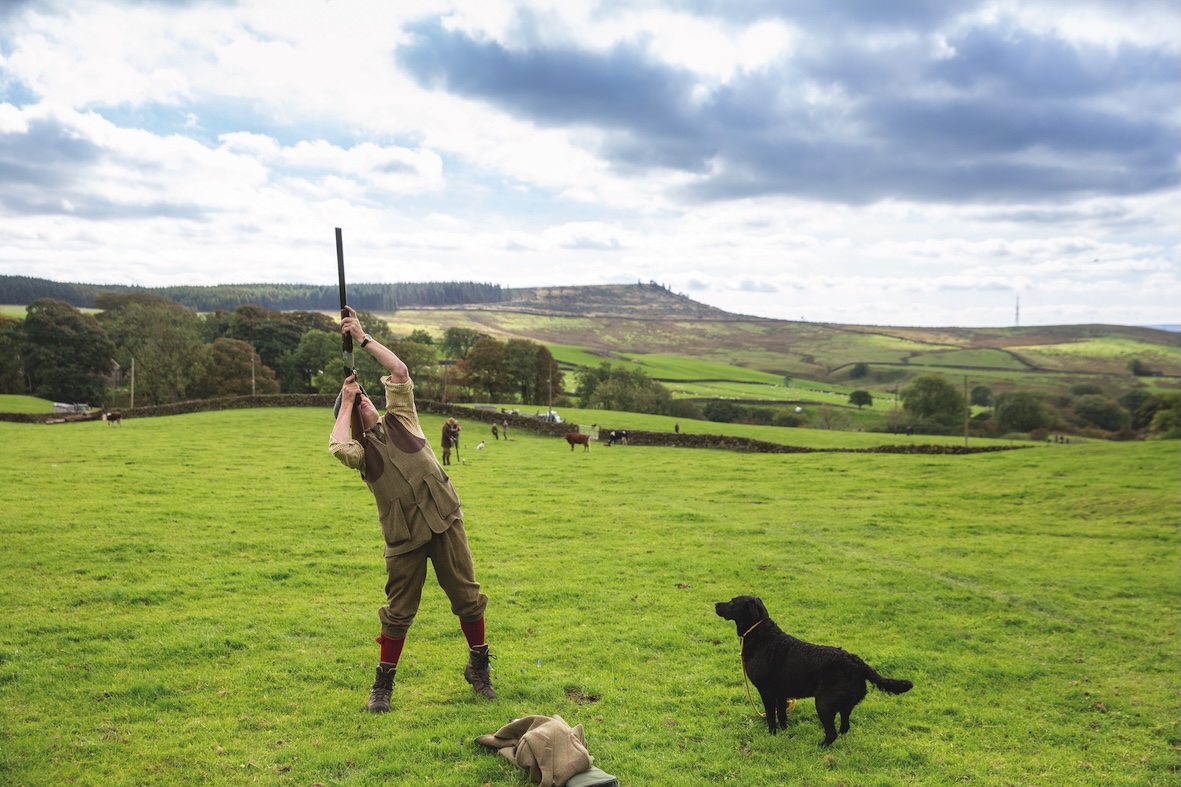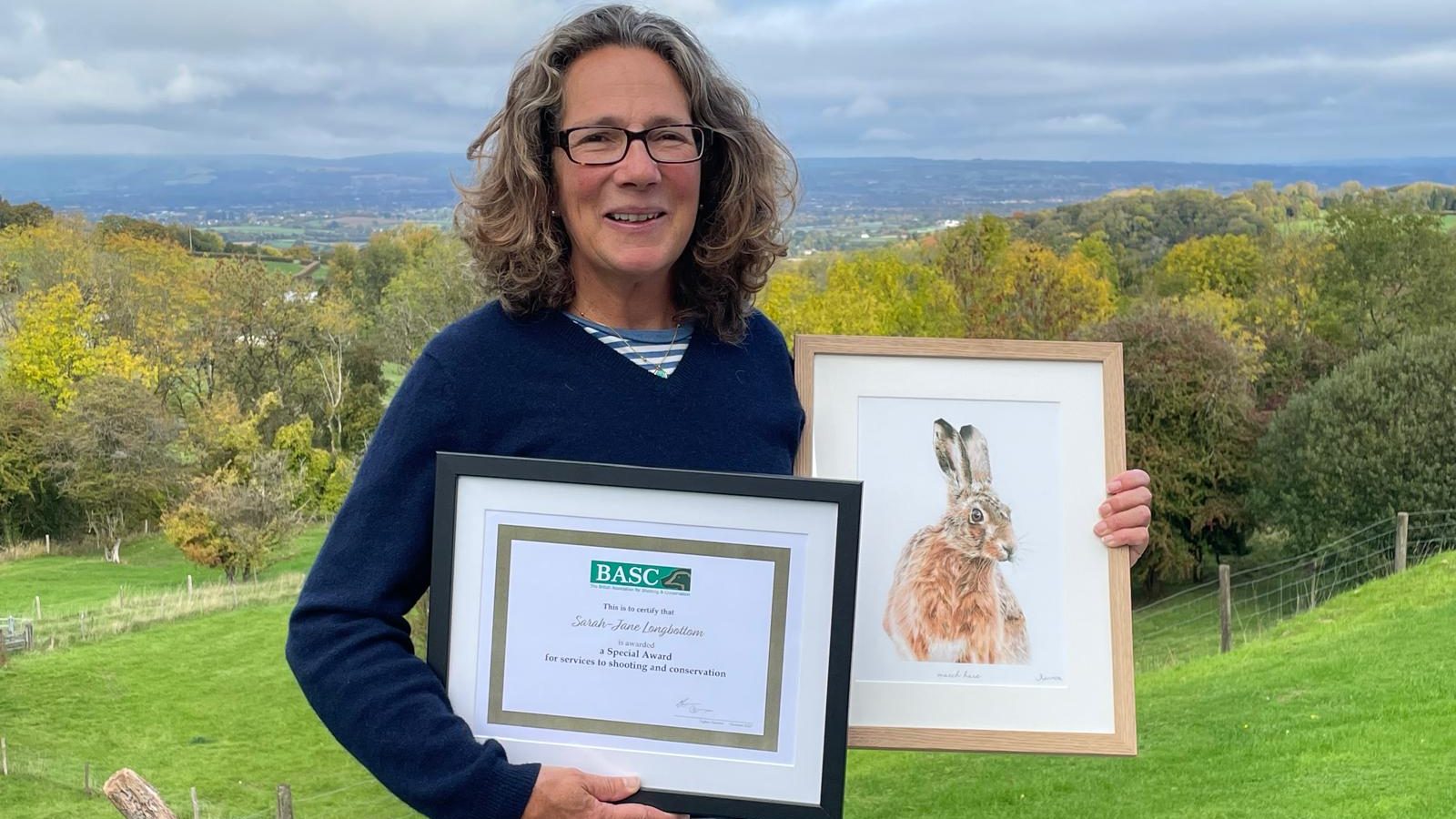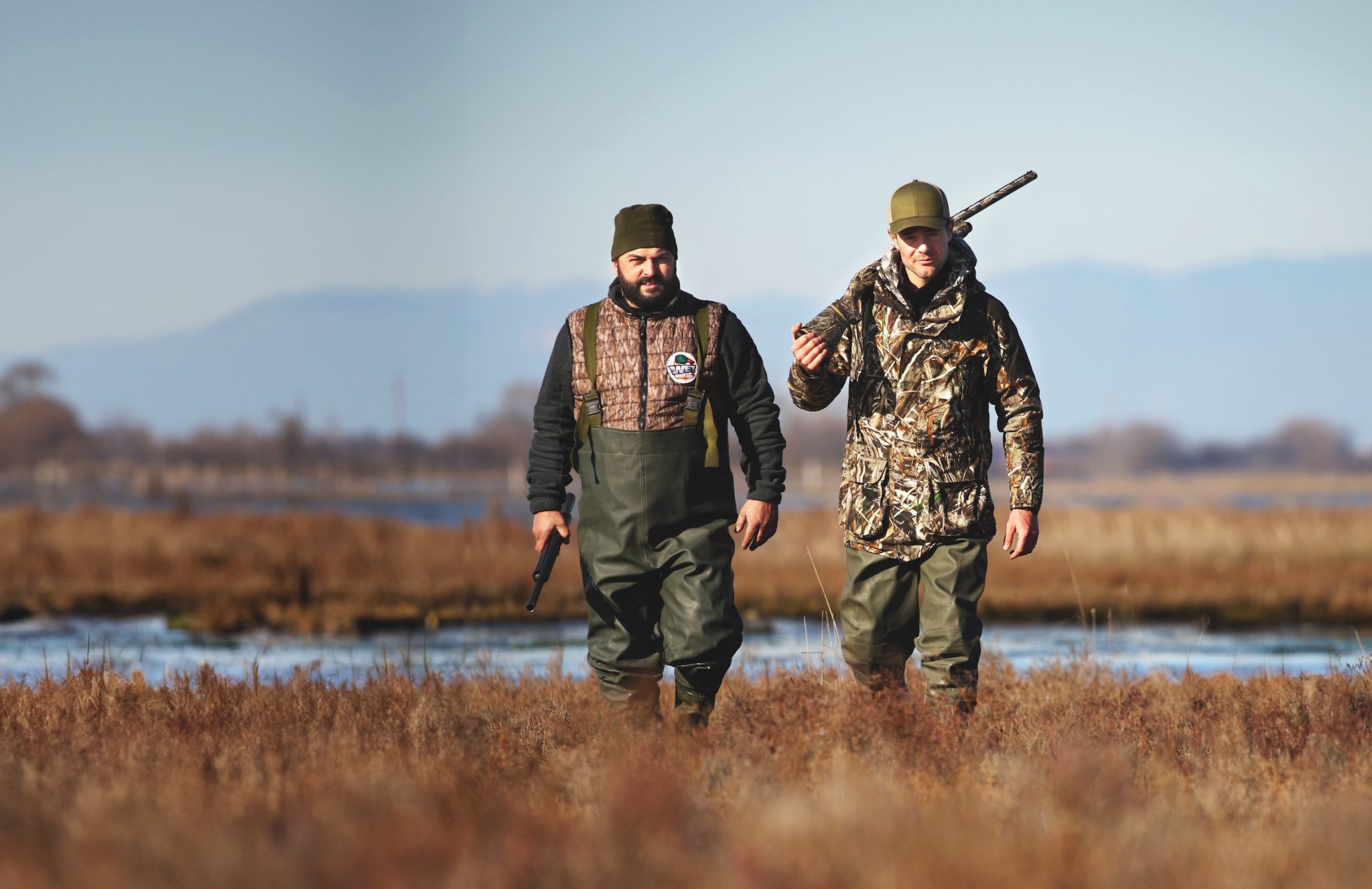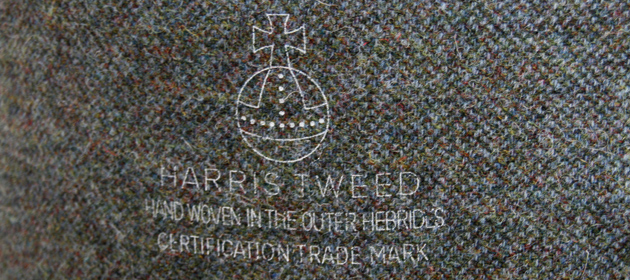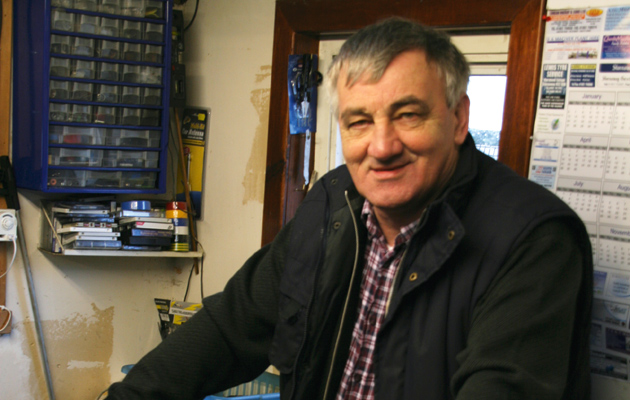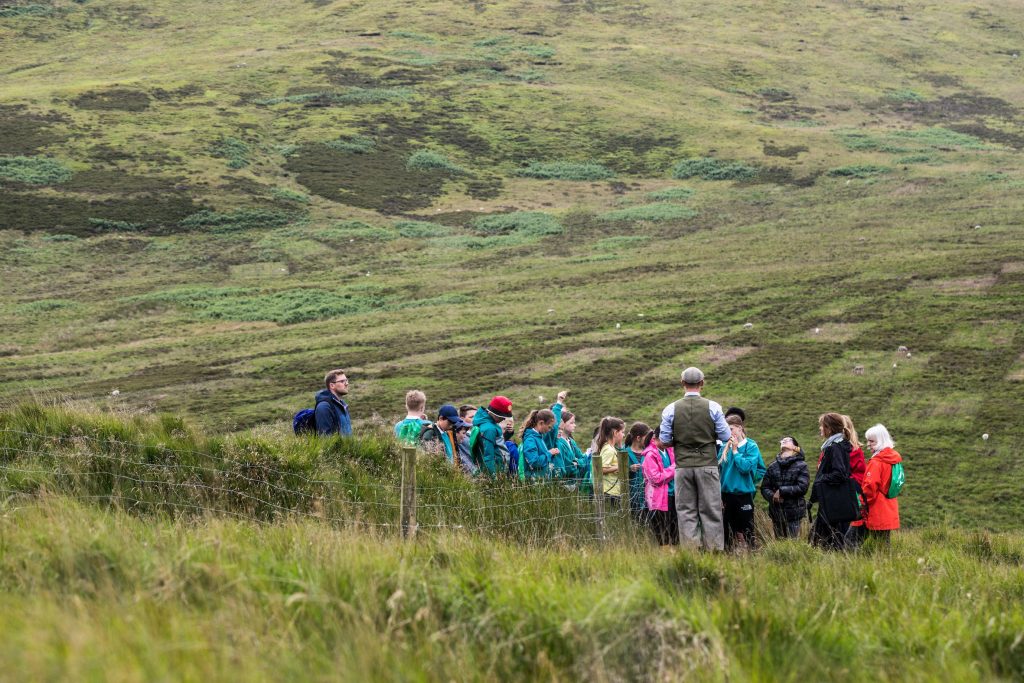Win CENS ProFlex DX5 earplugs worth £1,149 – enter here
Harris tweed: a traditional weaver shows how this beautiful fabric is made
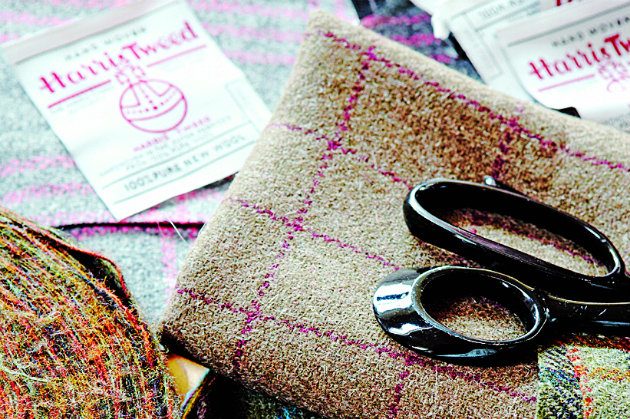
“It’s not all old. Brand new in 1970,” Donald John Mackay replied when I asked him whether his loom is an old one. “This’ll be it for me. I bought it in 1984, but I won’t need another.”
Weaving Harris tweed
Coincidentally, 1970 is when Donald started weaving Harris tweed. “My aunty set me up in a shed with a loom. My father, his mother and my uncle were weavers, too, and my aunt used to dye her own fleeces. My earliest recollections are of my father getting bags of wool from customers — it had been dyed and spun, and was delivered in balls. When I was very young, my father’s loom seemed to make a huge amount of noise, but now I remember it as much quieter than mine. It was in the cattle shed, with the cattle at one end, the hay in the middle and the loom at the other end.” (If you’re looking for a Harris tweed jacket, you’ll find our list of tweed jackets here.)
Extraordinary colours
Donald’s Harris tweed loom sits in a small shed, the front of which is also his salesroom. A large glass window has stunning views over the bay at Luskentyre, while also casting plenty of light on the rolls of Harris tweed. The colours are extraordinary. Greys, greens and reds are so much more — made up of single ply, but each ply containing an encyclopedia of hues. Picking up a loupe (a tiny magnifying glass, like those used by jewellers), Donald showed me. It was like a kaleidoscope. Red isn’t just red, it is rust, lichen, moss, stone and sky. “When people still dyed their own wool, the recipes were carefully guarded. Each fleece was dyed a different colour, using plants, soot and other ingredients, including urine. Then bits of each fleece would be mixed together in different proportions, giving a single-ply thread made up of different colours.”
These days, of course, the wool is ready- dyed. The last mill in Tarbert closed in the late 1960s, and now three remain, all on Lewis. “The wool comes to me dyed and spun, but it takes me a day to set up the loom,” Donald said, as he showed me the different parts of the machine. He can weave around three to four metres an hour, but it takes a day to set it up. It’s a single width loom, so 36in in the loom. However, once woven, the cloth is sent to the mill, where it is washed. This means that it is pre-shrunk, leaving a 30in wide cloth. The ply that goes length-ways is the warp, while the ply that is carried by the shuttle is called the welt. Donald demonstrated, slipping a tiny bit of wool into the weave to show how the weaving progresses. Shouting to make himself heard over the din, Donald suggested that his father’s look was quieter than his because the noise was absorbed by the hay — Donald himself wears ear defenders.
“The tweed has to be hand-woven as well as coming from the Outer Hebrides to be Harris Tweed,” Donald explained. “Until recently it tended only to be the older generation who were still weaving, but there are a good lot of young weavers coming into the business. The Weaving Programme, set up by the Harris Tweed Authority, was revived in 2013 after a hiatus of nearly 15 years. It’s a package put together by the Harris Tweed Authority and the local council, with funding from Europe.
Shooting and tweed go together hand in hand and have done for years. Donald designs estate tweeds for landowners on Lewis, Harris and the mainland. These days, however, it isn’t only on the hill or in the line of Guns that you’ll see tweed. (Read how loud should your shooting tweeds be?)
“The popularity of tweed has made an enormous difference,” said Donald. “In 2004, I was contacted by Nike. I had no idea who it was, but the sportswear company asked me to send samples of my tweed to America. I didn’t really expect to hear anything again, but then I got an order for 10,000 yards.” Donald had to get other weavers to help, as at his normal production rate of 27 yards a day, it would take him far too long. Soon after the first order went out, Nike asked him for another 10,000 yards, and have since placed several more large orders.
Since that first order, the popularity of tweed, and Harris in particular, has gone through the roof. It’s very good news: in the early 2000s, there were only around 80 weavers left in the Outer Hebrides.
“Now there are more than 200 weavers, and lots of youngsters learning the craft,” said Donald: “I’ve had a few huge orders from a Japanese chain store for clothes, too, though they have some strange ideas about colour. They came here, to my workshop, and started picking up bits and pieces of wool from the floor, then asked me to make some very bright checks.” Apart from the fashion for tweed clothing, it’s also become extremely popular in interior design. “I often produce large volumes of a particular tweed for curtains and upholstery, which is popular at the moment.”
It’s a far cry from the weaving that went on in Donald’s childhood. “It was all crofter weavers and fishermen weavers. The fishermen did their weaving at night. You couldn’t really survive by doing just one thing on the Outer Hebrides in those days.”
The summer is when visitors come to Donald’s shed to buy directly from him: “Winters are quiet, but it means I can get more weaving done.” The absence of a website doesn’t seem to have impacted on his business at all, nor his renown. Do an Internet search on “Donald John Mackay”, and you’ll find endless interviews, photos and articles on him. I also found, after I’d visited him, that he was awarded the MBE in 2012 for services to the industry. I’m not surprised. After nearly 45 years of pedalling the loom, creating beautiful tweed and being one of the weavers responsible for the revival and survival of Harris Tweed, it’s very well deserved.
Donald and his wife don’t have children, “which means there’s none to follow in the trade. But I have two nephews who are weaving, which is good.”
I leave, my purse lightened and my bag heavier with bolts of tweed.
This piece was originally published in 2014 and has been updated.
Related Articles
Get the latest news delivered direct to your door
Subscribe to Shooting Times & Country
Discover the ultimate companion for field sports enthusiasts with Shooting Times & Country Magazine, the UK’s leading weekly publication that has been at the forefront of shooting culture since 1882. Subscribers gain access to expert tips, comprehensive gear reviews, seasonal advice and a vibrant community of like-minded shooters.
Save on shop price when you subscribe with weekly issues featuring in-depth articles on gundog training, exclusive member offers and access to the digital back issue library. A Shooting Times & Country subscription is more than a magazine, don’t just read about the countryside; immerse yourself in its most authoritative and engaging publication.



